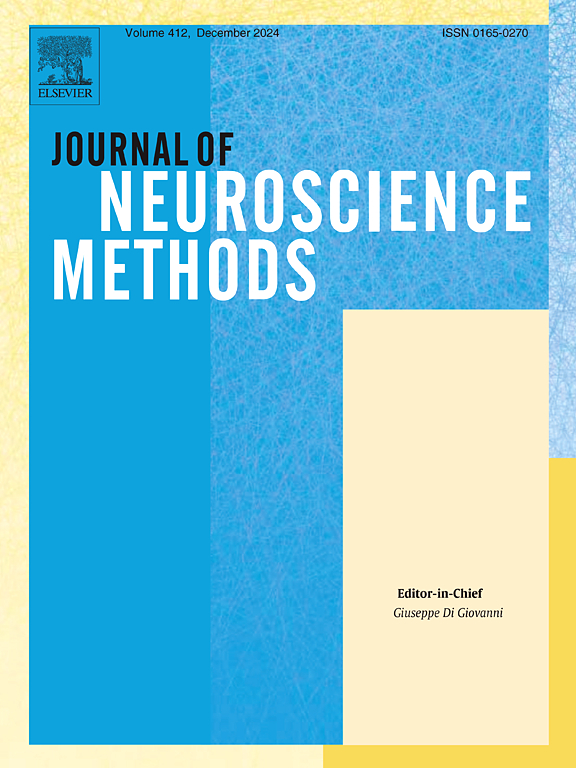推进无创脑刺激的网络荟萃分析:通过联合治疗优化卒中后情绪
IF 2.7
4区 医学
Q2 BIOCHEMICAL RESEARCH METHODS
引用次数: 0
摘要
脑卒中后抑郁和焦虑显著影响康复和生活质量。非侵入性脑刺激(NIBS)技术,包括经颅磁刺激(TMS)、经颅直流电刺激(tDCS)和经颅超声刺激(TUS),已经成为有前途的治疗选择。然而,单一和联合NIBS治疗的相对疗效尚不清楚。本网络荟萃分析旨在确定优化脑卒中后情绪障碍的最有效联合疗法。新方法系统检索PubMed、Embase、Cochrane Library、Web of Science和关键中文数据库,以确定截至2023年3月发表的随机对照试验(RCTs)。两名独立审稿人筛选研究,提取相关数据,并使用Cochrane手册评估偏倚风险。采用Stata SE 15.1版本和R软件4.2.3版本进行网络荟萃分析,以评估不同NIBS干预措施的比较有效性。结果共纳入50项随机对照试验(rct), 3852名受试者,18种不同的干预措施(包括11种联合治疗)。结果显示:脑卒中后抑郁:高频重复经颅磁刺激联合低频重复经颅磁刺激和西药治疗(HFrTMS_LFrTMS_WM)是最有效的治疗方法。低频rTMS联合中西医结合(HFrTMS_WM_TCM)疗效显著。•卒中后焦虑:tDCS联合心理治疗(tDCS_psychotherapy)在降低焦虑评分方面明显比假刺激更有效。•TUS的效果:TUS联合西药(TUS_WM)在减轻焦虑方面的效果优于单用西药。与现有方法的比较——不像以往的研究专注于单一模式的干预,本网络荟萃分析系统地评估了各种组合NIBS策略的比较有效性。结果表明,联合治疗明显优于单模态治疗,基于tms的方案在改善情绪障碍和功能独立性方面显示出最大的总体益处。结论优化后的NIBS联合疗法对脑卒中后抑郁和焦虑有较好的治疗效果。HFrTMS_LFrTMS_WM对抑郁和日常生活活动独立(adl)最有效,而tdcs_心理治疗和TUS_WM对焦虑特别有效。这些结果强调了综合NIBS策略在卒中后情绪优化方面的临床潜力,并呼吁进一步研究以完善治疗方案以提高患者预后。本文章由计算机程序翻译,如有差异,请以英文原文为准。
Advancing network meta-analysis in non-invasive brain stimulation: Optimizing post-stroke mood through combined therapies
Background
Post-stroke depression and anxiety significantly impact recovery and quality of life. Non-invasive brain stimulation (NIBS) techniques, including transcranial magnetic stimulation (TMS), transcranial direct current stimulation (tDCS), and transcranial ultrasound stimulation (TUS), have emerged as promising therapeutic options. However, the relative efficacy of single and combined NIBS therapies remains unclear. This network meta-analysis aims to identify the most effective combination therapies for optimizing post-stroke mood disorders.
New method
A systematic search was conducted across PubMed, Embase, Cochrane Library, Web of Science, and key Chinese databases to identify randomized controlled trials (RCTs) published up to March 2023. Two independent reviewers screened the studies, extracted relevant data, and assessed the risk of bias using the Cochrane Handbook. A network meta-analysis was performed using Stata SE version 15.1 and R software version 4.2.3 to evaluate the comparative effectiveness of different NIBS interventions.
Results
A total of 50 RCTs involving 3852 participants and 18 different interventions (including 11 combination therapies) were analyzed. The findings revealed:
- •Post-stroke depression: High-frequency repetitive TMS combined with low-frequency repetitive TMS and western medicine (HFrTMS_LFrTMS_WM) was the most effective therapy. Additionally, low-frequency rTMS combined with western medicine and traditional Chinese medicine (HFrTMS_WM_TCM) showed significant efficacy.
- •Post-stroke anxiety: tDCS combined with psychotherapy (tDCS_psychotherapy) was significantly more effective than sham stimulation in reducing anxiety scores.
- •Effect of TUS: TUS combined with western medicine (TUS_WM) demonstrated superior efficacy in reducing anxiety compared to western medicine alone.
Comparison with existing methods
Unlike previous studies focusing on single-modality interventions, this network meta-analysis systematically evaluates the comparative effectiveness of various combined NIBS strategies. Results indicate that combination therapies significantly outperform single-modality treatments, with TMS-based protocols showing the greatest overall benefit in improving both mood disorders and functional independence.
Conclusions
The findings suggest that optimized combination NIBS therapies offer superior outcomes for post-stroke depression and anxiety. HFrTMS_LFrTMS_WM was the most effective for depression and independence in activities of daily living (ADLs), while tDCS_psychotherapy and TUS_WM were particularly effective for anxiety. These results highlight the clinical potential of integrated NIBS strategies for post-stroke mood optimization and call for further research to refine treatment protocols for enhanced patient outcomes.
求助全文
通过发布文献求助,成功后即可免费获取论文全文。
去求助
来源期刊

Journal of Neuroscience Methods
医学-神经科学
CiteScore
7.10
自引率
3.30%
发文量
226
审稿时长
52 days
期刊介绍:
The Journal of Neuroscience Methods publishes papers that describe new methods that are specifically for neuroscience research conducted in invertebrates, vertebrates or in man. Major methodological improvements or important refinements of established neuroscience methods are also considered for publication. The Journal''s Scope includes all aspects of contemporary neuroscience research, including anatomical, behavioural, biochemical, cellular, computational, molecular, invasive and non-invasive imaging, optogenetic, and physiological research investigations.
 求助内容:
求助内容: 应助结果提醒方式:
应助结果提醒方式:


